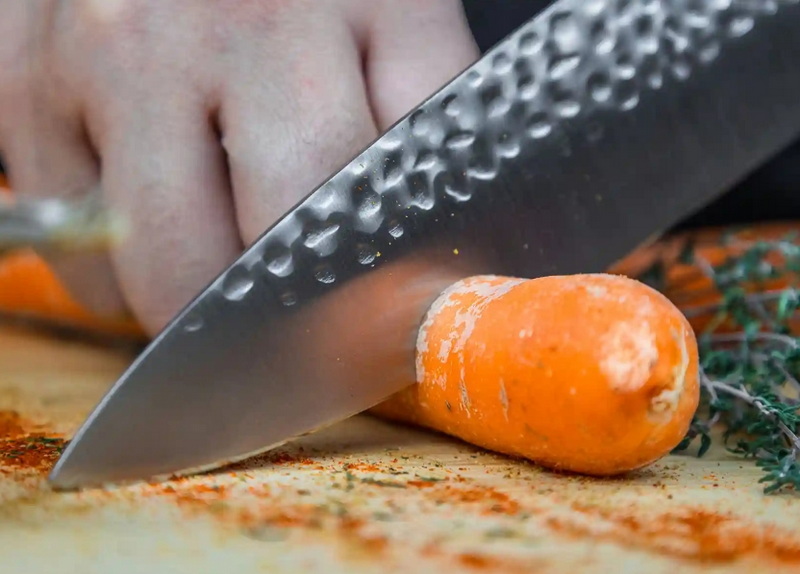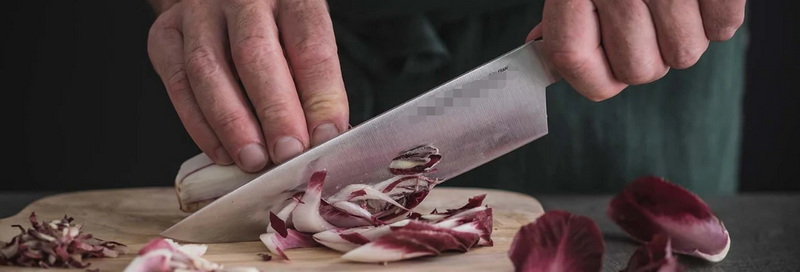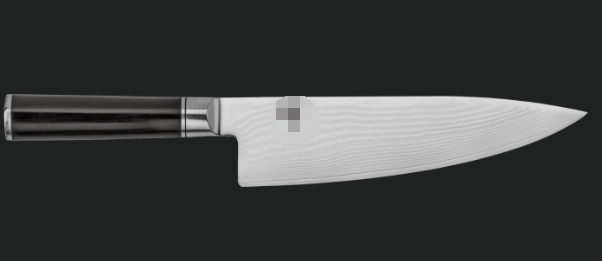

Views: 222 Author: Ella Publish Time: 2025-05-02 Origin: Site








Content Menu
● Understanding the Basics: Japanese vs Western Chef Knives
>> Steel Hardness and Blade Material
● Detailed Comparison of Japanese and Western Chef Knives
● Advantages and Disadvantages
● Popular Types of Japanese and Western Chef Knives
● How to Choose the Right Knife for You
>> Consider Your Cooking Style
>> Skill Level
>> Budget
● Practical Tips for Choosing and Caring for Your Chef Knife
● Additional Considerations When Choosing a Chef Knife
>> Edge Geometry and Sharpness
>> Versatility vs Specialization
● Frequently Asked Questions (FAQ)
>> 1. What is the main difference between Japanese and Western chef knives?
>> 2. Are Japanese knives harder to maintain than Western knives?
>> 3. Which knife is better for beginners?
>> 4. Can I use a Japanese knife for all kitchen tasks?
>> 5. How often should I sharpen my chef knife?
Choosing the right chef knife is essential for any cook, whether you are a professional chef or a passionate home cook. Among the many options available, Japanese and Western chef knives stand out as two of the most popular and widely used types. Each has unique characteristics, advantages, and disadvantages that suit different cooking styles and preferences. This comprehensive guide will help you understand the key differences between Japanese and Western chef knives, explore their features, and decide which one is best for your kitchen.

One of the most noticeable differences between Japanese and Western chef knives is the blade design. Japanese knives typically have thinner, lighter blades with straighter edges, while Western knives tend to be thicker, heavier, and have curved blades.
- Japanese Knives: The blades are usually thinner and lighter, designed for precision and delicate cutting. The straight edge allows for clean, straight cuts, especially useful for slicing fish, vegetables, and boneless meat. Many Japanese knives feature a single bevel (sharpened on one side), which enhances precision but requires more skill to use.
- Western Knives: These knives have thicker, more robust blades with a pronounced curve, allowing for a rocking motion while chopping. The double bevel (sharpened on both sides) makes them versatile and easier to handle for a variety of tasks, including heavy-duty chopping and cutting through bones.
The type of steel and its hardness significantly affect the knife's performance and maintenance.
- Japanese Knives: Made from harder steel with higher carbon content, often rated between 58 to 65 on the Rockwell hardness scale. This hardness allows the blade to hold a sharper edge for longer but makes it more brittle and prone to chipping if misused. Popular steel types include high-carbon steel and advanced powdered steels like SG2 (Super Gold 2).
- Western Knives: Typically made from softer steel with lower carbon content, rated between 52 to 58 on the Rockwell scale. This makes the blades tougher, more durable, and less likely to chip, but they require more frequent sharpening.
The handle design also differs between the two styles, affecting grip and comfort.
- Japanese Knives: Usually feature a straight, wooden handle (wa-handle) that is lightweight and allows for precise control. The handle is often replaceable, reflecting traditional craftsmanship.
- Western Knives: Tend to have a curved handle with a bolster (the thick junction between blade and handle) for added balance and safety. Handles are often made from composite materials or riveted wood and are designed for a secure grip.
| Feature | Japanese Chef Knife | Western Chef Knife |
|---|---|---|
| Blade Thickness | Thin, typically 1.5-3.5 mm at the spine | Thicker, more robust |
| Blade Hardness | Harder steel (58-65 HRC), sharper but brittle | Softer steel (52-58 HRC), tougher and durable |
| Blade Shape | Straighter edge, some single bevel | Curved edge, double bevel |
| Weight | Lighter, more agile | Heavier, more substantial |
| Handle | Straight wooden (wa-handle), replaceable | Curved, riveted or molded, with bolster |
| Cutting Style | Precise slicing, straight cuts | Rocking motion chopping, versatile |
| Maintenance | Requires careful sharpening, prone to chipping | Easier to sharpen and maintain |
| Best For | Delicate tasks like slicing fish and vegetables | Heavy-duty tasks like chopping bones and meats |
Advantages:
- Extremely sharp edges for precision cutting
- Lightweight and well-balanced for agile handling
- Retain sharpness longer due to harder steel
- Specialized blade types for specific tasks (e.g., Yanagiba for slicing fish, Deba for filleting)
Disadvantages:
- More brittle, prone to chipping if used improperly
- Require more careful maintenance and sharpening techniques (whetstone recommended)
- Usually more expensive
- Handle design may feel less secure for some users
Advantages:
- Durable and tough, suitable for heavy-duty tasks
- Easier to maintain and sharpen
- Versatile for a wide range of kitchen tasks
- Often more affordable and user-friendly for beginners
- Comfortable handle with bolster for safety and balance
Disadvantages:
- Heavier and thicker, which can cause fatigue over long use
- Edges dull faster and require more frequent sharpening
- Less precise for delicate slicing tasks
- Gyuto: Japanese equivalent of a Western chef's knife, versatile with a thinner blade for precision. Ideal for slicing meat, fish, and vegetables with accuracy.
- Santoku: Multi-purpose knife with a shorter, wider blade, ideal for slicing, dicing, and mincing. Its name means "three virtues," reflecting its versatility.
- Deba: Heavy-duty knife for fish and meat, thicker and single bevel, perfect for filleting and butchering tasks.
- Yanagiba: Long, thin blade designed specifically for slicing raw fish for sushi and sashimi, allowing smooth, clean cuts without tearing.
- Nakiri: Straight-edged vegetable knife designed for clean, precise cuts on vegetables, minimizing crushing and bruising.
- Chef's Knife: The all-purpose knife with a curved blade for rocking cuts, suitable for chopping, slicing, and dicing a variety of ingredients.
- Santoku (Western-style): Adapted from Japanese design but thicker and heavier, combining some precision with Western robustness.
- Cleaver: Heavy blade for chopping bones and tough meats, designed to withstand impact and deliver powerful cuts.
- Paring Knife: Small knife for detailed work like peeling, trimming, and intricate cutting tasks.
- If you prepare a lot of delicate dishes like sushi, sashimi, or fine vegetable cuts, a Japanese knife's precision and sharpness will be beneficial.
- For heavy-duty tasks such as chopping through bones, tougher vegetables, or large cuts of meat, a Western knife's durability and rocking motion are advantageous.
- Beginners may find Western knives easier to handle and maintain due to their forgiving edges and robust design.
- Experienced cooks who appreciate fine control and precision may prefer Japanese knives despite their maintenance demands.
- Japanese knives require regular honing and careful sharpening with whetstones.
- Western knives can be sharpened with various tools and generally tolerate rougher treatment.
- Japanese knives tend to be more expensive due to the craftsmanship and materials used.
- Western knives offer a wide range of prices, often more affordable for casual users.

- Test the weight and balance in your hand before purchasing. A knife that feels comfortable and well-balanced will reduce fatigue and improve control.
- Consider the types of food you prepare most often and choose a knife suited to those tasks.
- If possible, try different blade shapes and handle styles to find what feels best.
- Always hand wash your knives with mild detergent and dry immediately to prevent rust and damage. Avoid putting knives in the dishwasher as harsh detergents and heat can damage the blade and handle.
- Use a proper cutting board, preferably wood or plastic, to protect the blade's edge. Hard surfaces like glass or stone can dull knives quickly.
- Regularly hone your knife with a honing rod to maintain the edge between sharpenings. Honing realigns the blade edge and prolongs sharpness.
- Sharpen your knife using a whetstone or professional sharpening service to keep the blade in optimal condition. Avoid electric sharpeners unless designed for your knife type.
- Store knives safely in a knife block, magnetic strip, or protective sheath to avoid damage and accidents. Avoid tossing knives loosely in drawers.
The weight and balance of a knife greatly affect comfort and control. Japanese knives are generally lighter, which reduces hand fatigue during extended use and allows for more precise cuts. Western knives, being heavier, provide momentum that can make chopping easier but may tire the wrist faster. The ideal knife feels balanced in your hand, with neither heavy blade nor heavy handle overpowering the other.
Japanese knives often have a thinner edge angle, which contributes to their exceptional sharpness and ability to make clean cuts. However, this also makes them more delicate. Western knives have a more robust edge geometry, sacrificing some sharpness for durability and ease of maintenance.
Western knives tend to be more versatile, capable of handling a wide range of kitchen tasks with a single blade. Japanese knives often come in specialized forms designed for particular tasks, such as slicing raw fish or chopping vegetables precisely. Some cooks prefer owning multiple Japanese knives for different uses, while others prefer the all-in-one approach of a Western chef's knife.
Choosing between a Japanese and Western chef knife depends on your cooking style, skill level, and maintenance preferences. Japanese knives offer unmatched sharpness, precision, and specialized designs ideal for delicate tasks, while Western knives provide durability, versatility, and ease of use for a broad range of kitchen duties. Many chefs find it beneficial to own both types to leverage their unique strengths.
Investing in a quality knife, whether Japanese or Western, enhances your cooking experience by improving efficiency, precision, and enjoyment in the kitchen. Consider your needs carefully, and choose a knife that feels comfortable and suits your culinary goals.

Japanese knives are typically thinner, lighter, and made from harder steel, offering sharper edges and precision. Western knives are thicker, heavier, and made from softer steel, making them more durable and versatile for heavy-duty tasks.
Yes, Japanese knives require more careful maintenance, including regular honing and sharpening with whetstones, due to their harder but more brittle steel. Western knives are generally easier to sharpen and maintain.
Western knives are usually better for beginners because they are more forgiving, durable, and easier to handle. Japanese knives demand more skill to avoid chipping and require more maintenance.
While Japanese knives excel in precision tasks, some types are specialized (e.g., Yanagiba for slicing fish). For heavy-duty tasks like cutting bones, a Western-style knife or a heavy cleaver may be more appropriate.
Japanese knives typically need sharpening less frequently due to harder steel but require proper technique when sharpening. Western knives dull faster and may need more regular sharpening, depending on use.